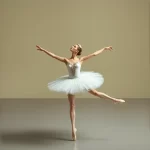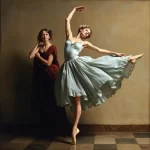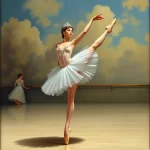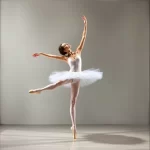Dutch Ballet: Innovation and Tradition in The Netherlands

Introduction
Ballet, a classical dance form known for its grace, precision, and expressive movements, has a rich and diverse history that spans across various cultures and countries. The Netherlands, in particular, has made significant contributions to the world of ballet, blending innovation with tradition to create a unique and influential ballet culture. This article explores the origins, development, and contemporary state of Dutch ballet, highlighting its key figures, signature styles, and cultural impact.
Origins of Ballet in The Netherlands
Early Influences
The introduction of ballet to the Netherlands can be traced back to the 17th century, during the Dutch Golden Age. This period was marked by immense cultural, economic, and artistic growth. The influence of French court ballet, which was popularized by King Louis XIV, played a significant role in the adoption of ballet in the Netherlands. Additionally, local folk dances and theatrical traditions contributed to the early development of Dutch ballet.
Key Figures
One of the pioneering figures in Dutch ballet was Sonia Gaskell, a Russian-born dancer and choreographer who moved to the Netherlands in the 1930s. Gaskell’s efforts in establishing ballet as a respected art form in the country were instrumental. She founded the Netherlands Ballet in 1954, which later merged with other companies to form the Dutch National Ballet. Another key figure was Rudi van Dantzig, a choreographer and artistic director who played a crucial role in shaping the Dutch ballet scene in the latter half of the 20th century.
Development and Evolution
Formative Years
The formative years of Dutch ballet were characterized by the establishment of key institutions and the development of a distinct style. The founding of the Dutch National Ballet in 1961 marked a significant milestone. Under the leadership of Sonia Gaskell, the company gained international recognition for its innovative productions and high artistic standards. The early years also saw the establishment of ballet schools, such as the National Ballet Academy, which played a crucial role in training future generations of dancers.
Cultural Integration
Ballet in the Netherlands was well-received by society and quickly became an integral part of the country’s cultural life. The Dutch National Ballet’s performances were attended by a diverse audience, ranging from royalty to ordinary citizens. Ballet also played a role in the political landscape, with performances often reflecting contemporary social issues and promoting cultural diplomacy. The integration of ballet into Dutch culture was further facilitated by the country’s strong tradition of supporting the arts through public funding and private patronage.
Signature Style and Techniques
Unique Characteristics
Dutch ballet is known for its unique blend of classical and contemporary styles. The choreography often incorporates elements of modern dance, resulting in a dynamic and expressive form of ballet. Dutch choreographers are renowned for their innovative use of space, lighting, and multimedia elements, which add a distinctive visual and emotional depth to their productions. The emphasis on storytelling and character development is another hallmark of Dutch ballet, with many performances exploring complex themes and narratives.
Influences on Global Ballet
The Netherlands has made significant contributions to the global ballet scene. Dutch choreographers, such as Hans van Manen and Jiří Kylián, have gained international acclaim for their groundbreaking work. Van Manen’s minimalist and abstract style, combined with his keen sense of musicality, has influenced choreographers worldwide. Kylián, known for his innovative use of movement and emotional depth, has also left a lasting impact on the global ballet community. Signature pieces like Van Manen’s “Adagio Hammerklavier” and Kylián’s “Petite Mort” are celebrated and performed by ballet companies around the world.
Notable Ballet Companies and Schools
Major Ballet Institutions
The Dutch National Ballet is the premier ballet company in the Netherlands and one of the leading ballet companies in the world. Based in Amsterdam, it has a rich repertoire that includes classical ballets, contemporary works, and new creations. The company is known for its high artistic standards and innovative productions.
Another significant institution is the National Ballet Academy, which provides comprehensive training for aspiring dancers. The academy’s rigorous curriculum and emphasis on technical excellence have produced many successful dancers who have gone on to perform with leading ballet companies worldwide.
International Recognition
The Dutch National Ballet has received numerous accolades and awards for its contributions to the art of ballet. The company has been invited to perform at prestigious international festivals and venues, showcasing Dutch ballet on the global stage. The National Ballet Academy has also gained recognition for its high-quality training programs and successful alumni.
Iconic Ballet Performances and Choreographies
Signature Ballets
One of the most famous ballets to originate from the Netherlands is “The Green Table” by Kurt Jooss. Although Jooss was German, his work had a significant impact on Dutch ballet. “The Green Table” is an anti-war ballet that uses powerful imagery and expressive movements to convey its message. It remains a poignant and relevant piece to this day.
Another iconic ballet is “Four Last Songs” by Rudi van Dantzig. Set to the music of Richard Strauss, this ballet explores themes of love, loss, and mortality. Van Dantzig’s choreography is known for its emotional depth and lyrical beauty, making “Four Last Songs” a beloved work in the Dutch ballet repertoire.
Influential Choreographers
Hans van Manen is one of the most influential choreographers in Dutch ballet. His work is characterized by its clarity, precision, and musicality. Van Manen’s ability to create powerful and evocative movements has earned him international acclaim. Some of his notable works include “Adagio Hammerklavier,” “Grosse Fuge,” and “5 Tangos.”
Jiří Kylián, although Czech-born, has had a profound impact on Dutch ballet through his long association with Nederlands Dans Theater (NDT). Kylián’s choreography is known for its innovative use of movement, emotional intensity, and exploration of human relationships. His works, such as “Petite Mort,” “Bella Figura,” and “Symphony of Psalms,” are celebrated worldwide.
Contemporary Ballet in The Netherlands
Modern Developments
In recent years, Dutch ballet has continued to evolve, embracing new trends and exploring diverse themes. Contemporary choreographers, such as Marco Goecke and Annabelle Lopez Ochoa, are pushing the boundaries of ballet with their innovative and experimental works. The Dutch National Ballet remains at the forefront of these developments, commissioning new pieces and collaborating with international artists.
Current Challenges and Opportunities
Despite its successes, the Dutch ballet community faces several challenges. Funding for the arts is a constant concern, with budget cuts threatening the sustainability of ballet companies and schools. Additionally, there is a need to attract and retain diverse audiences, particularly younger generations. However, these challenges also present opportunities for growth and innovation. By embracing digital platforms, engaging with communities, and fostering collaborations, Dutch ballet can continue to thrive and inspire future generations.
Cultural Impact and Legacy
Cultural Significance
Ballet has had a profound impact on Dutch culture, shaping the country’s artistic landscape and enriching its cultural heritage. The Netherlands’ commitment to supporting the arts has allowed ballet to flourish, creating a vibrant and dynamic ballet community. Ballet performances are celebrated events that bring people together, fostering a sense of shared cultural identity and appreciation for the arts.
Global Influence
The influence of Dutch ballet extends far beyond the country’s borders. Dutch choreographers, dancers, and institutions have made significant contributions to the global ballet scene, inspiring artists and audiences worldwide. The innovative and expressive style of Dutch ballet has left a lasting legacy, influencing the development of contemporary ballet and enriching the global dance community.
FAQ
What is the history of ballet in The Netherlands?
Ballet in the Netherlands has its origins in the 17th century, influenced by French court ballet and local folk dances. Key figures like Sonia Gaskell and Rudi van Dantzig played instrumental roles in establishing and developing Dutch ballet, leading to the formation of the Dutch National Ballet in 1961.
Who are the most influential figures in Dutch ballet?
Some of the most influential figures in Dutch ballet include Sonia Gaskell, Rudi van Dantzig, Hans van Manen, and Jiří Kylián. These individuals have made significant contributions to the development and global recognition of Dutch ballet.
What makes Dutch ballet unique?
Dutch ballet is unique for its blend of classical and contemporary styles, innovative choreography, and emphasis on storytelling and character development. The use of space, lighting, and multimedia elements adds a distinctive visual and emotional depth to Dutch ballet performances.
How has Dutch ballet influenced global ballet?
Dutch ballet has influenced global ballet through the work of choreographers like Hans van Manen and Jiří Kylián, whose innovative styles have inspired artists worldwide. Signature pieces from Dutch ballet are performed by leading ballet companies around the globe, showcasing the Netherlands’ contributions to the art form.
Are there any famous ballets from The Netherlands?
Yes, some famous ballets from the Netherlands include “The Green Table” by Kurt Jooss and “Four Last Songs” by Rudi van Dantzig. These ballets are celebrated for their powerful themes, expressive choreography, and lasting impact on the ballet repertoire.
How can I learn more about ballet in The Netherlands?
To learn more about ballet in the Netherlands, you can explore books such as “Hans van Manen: Master of Movement” and “Jiří Kylián: Forgotten Memories.” Documentaries like “Hans van Manen: Just Dance the Steps” and “Jiří Kylián: Forgotten Memories” also provide valuable insights into Dutch ballet.
Conclusion
In summary, Dutch ballet is a unique and influential art form that blends tradition with innovation. From its early influences and key figures to its contemporary developments, Dutch ballet has made significant contributions to the global ballet scene. The Netherlands’ commitment to supporting the arts has allowed ballet to flourish, creating a vibrant and dynamic ballet community. As Dutch ballet continues to evolve, it will undoubtedly inspire future generations and leave a lasting legacy on the global stage.





